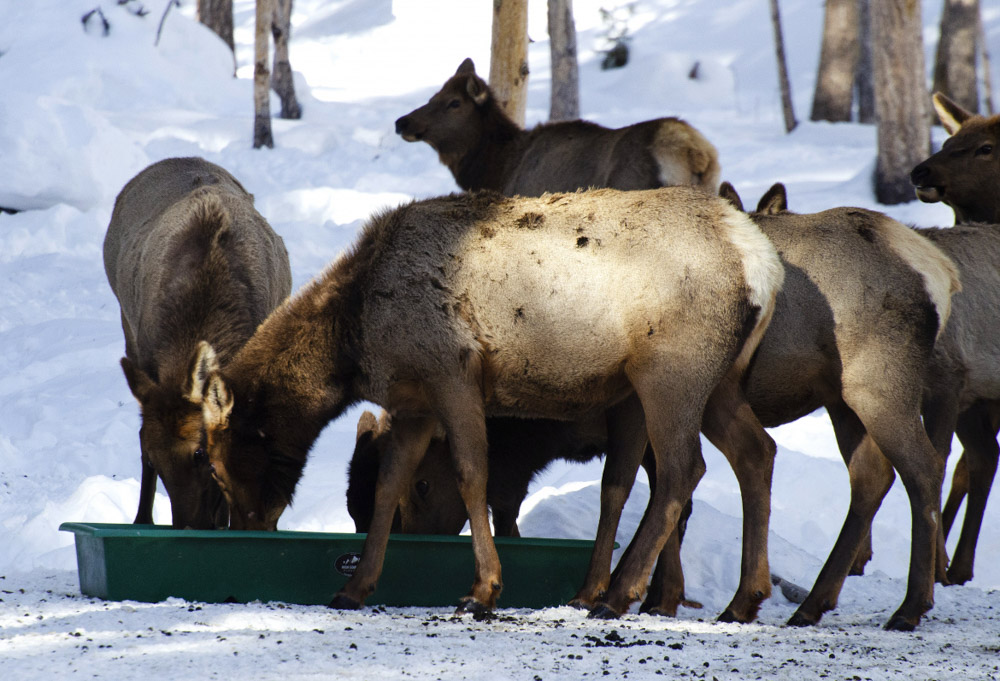Below is a news release from the Idaho Department of Fish and Game.
Staff from Fish and Game, Magic Valley Region began feeding elk at the Bullwacker feed site on December 23, 2021 as deep winter snows began to accumulate throughout the Wood River Valley. The site typically feeds over 125 elk each year.
Located west of Ketchum, the Bullwacker feed site is the only Fish and Game Commission sanctioned feed site in Idaho. Depending on winter conditions, feeding typically begins in late December or early January.
Elk feeding at the Bullwacker feed site west of Ketchum
Residents and visitors are asked to stay away from the feed site in order to not disturb the elk.
It is anticipated that feeding will continue until April 2022.
Residents should also be aware that the Ketchum Ranger District, Sawtooth National Forest has instituted its yearly closure in the Warm Springs drainage to protect wintering deer and elk from human-caused disturbances. All national forest lands from the West Fork of Warm Springs east to Ketchum and north of the Warm Springs road within the Warm Springs drainage will be closed. The area closure will be posted with signs at normal access points.
History of the Bullwacker feed site
Feeding at Bullwacker has occurred on an annual basis since the 1980s, with early feeding beginning in the 1950s. The site was established with the intention of keeping elk away from Ketchum and Sun Valley. While many think of feed sites as a way to supplement food on winter range, the Bullwacker feed site purpose is to lure elk away from local communities.
A large number of deer and elk have become year-round or seasonal residents within communities throughout the Wood River Valley, leading to an increased number of human-wildlife conflicts in the wintertime. Big game that remain in and around communities run a higher risk of getting hit on roads and highways, caught in fences, falling through thin ice on decorative ponds and into household window wells, as well as getting chased by off-leash dogs, and tangled in swing sets and hammocks.
Feeding wildlife by residents is strongly discouraged since unauthorized feed sites can lead to unintended consequences of attracting wildlife into close proximity of towns and neighborhoods. (Please read Feeding elk and deer in town does more harm than good.)
For more information about how to reduce human-wildlife conflicts and suggestions on how to live and recreate safely around wildlife visit the Wood River Valley Wildlife Smart Communities website.
(Photo credit: Idaho Department of Fish and Game)
